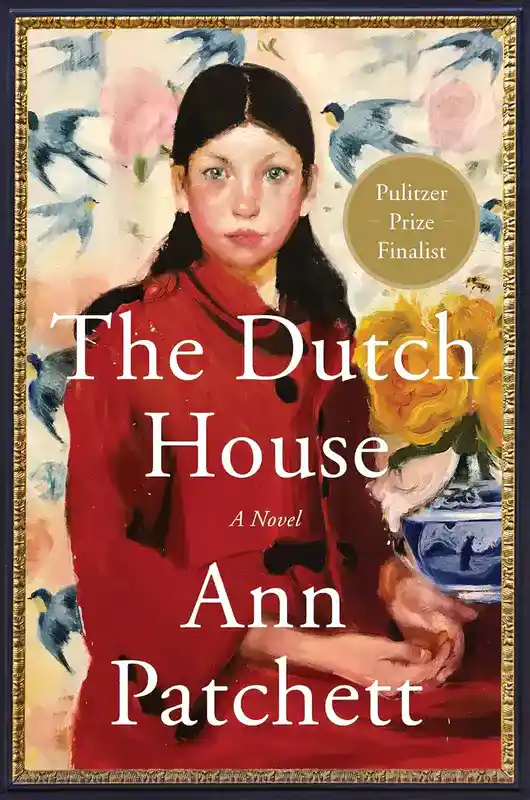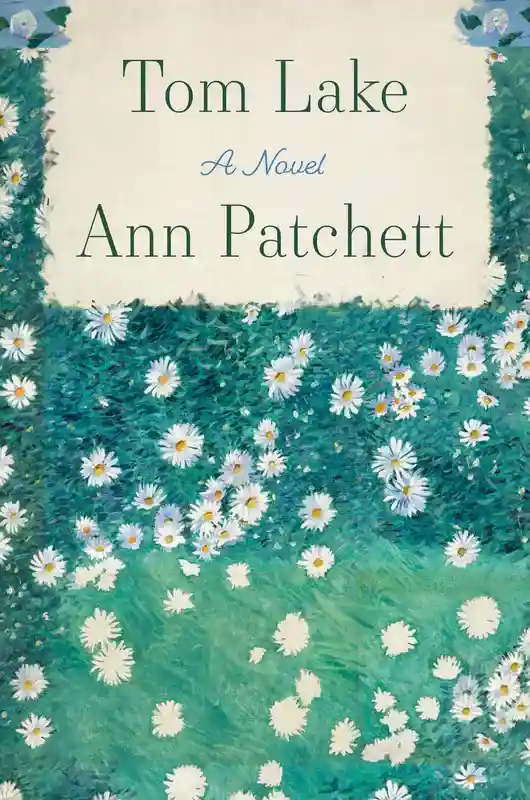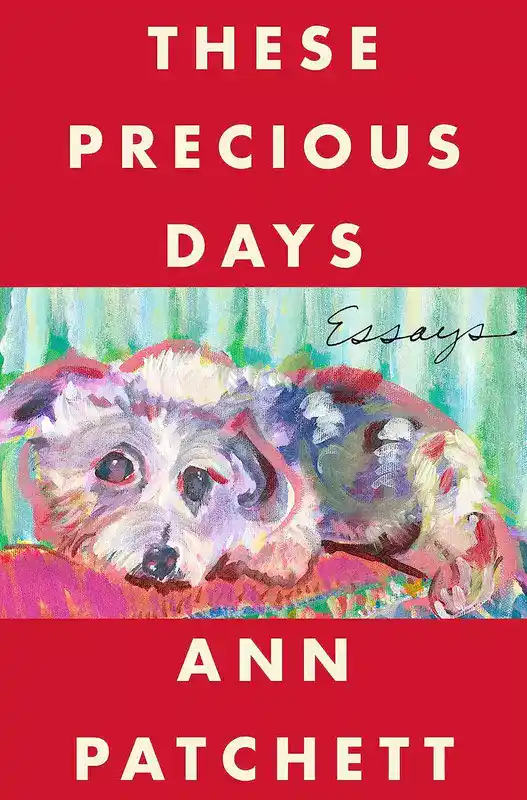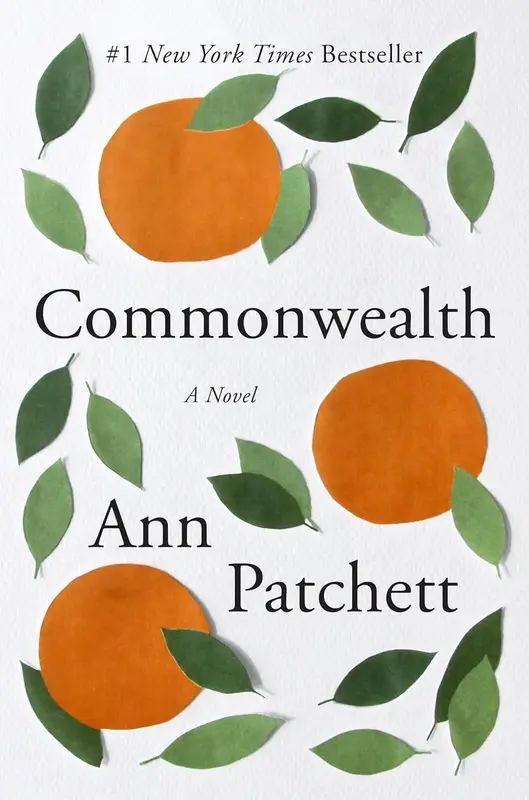This post may contain affiliate links. Read more here.
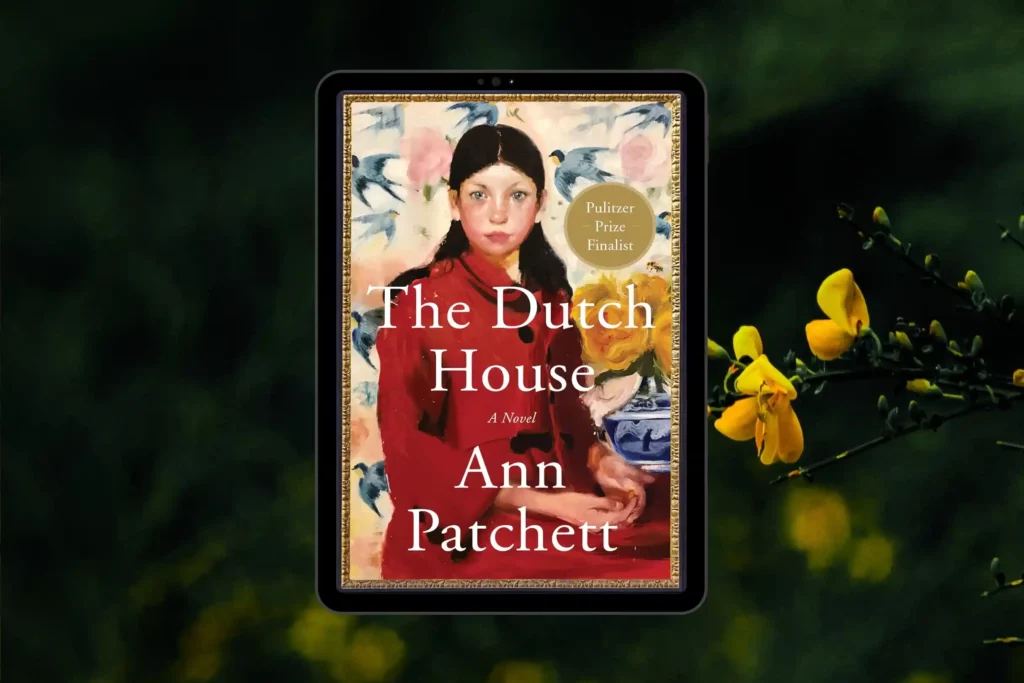
Book club questions for The Dutch House by Ann Patchett explore the complexities of relationships, the consequences of choices, and the ways in which individuals cope with adversity and change.
This is a dark fairytale: two young siblings removed from their beloved childhood home by their wicked stepmother.
Ms. Patchett writes beautifully, and in many ways, her words often feel like life rather than literature. I highly recommend this novel – it is heartbreaking, tragic, and at times very odd and ironic – overall, one of Patchett’s best works.
What are your thought on this book? ✨
The Dutch House by Ann Patchett
In this blog post you will find the discussion questions for The Dutch House by Ann Patchett.
At the bottom of this post I also have some additional suggestions for others novels written by Ann, as well as PDF with printable discussion question you can use with your book clubs.
There are more than 40 questions in this comprehensive guide, so I suggest printing them out, and taking your time with each question as there’s lot to unpack!
Book Club Questions | Additional Recommendations | Printable PDF
About the Story
The Dutch House is a novel about the strong bond between two siblings, Danny and Maeve, and the impact of their family’s history on their lives.
The story follows their father’s rise to wealth after World War II and his purchase of a grand mansion called the Dutch House. However, their lives take a tragic turn when their father’s decision to buy the house leads to the unraveling of their family. After being kicked out of the house by their stepmother, Danny and Maeve must navigate life’s challenges together, relying on each other for support.
The novel spans five decades and explores themes of inheritance, love, forgiveness, and self-discovery. Despite their outward success, the siblings find solace only in each other and must confront their past and the people who left them behind, putting their unshakeable bond to the ultimate test.
About the Author
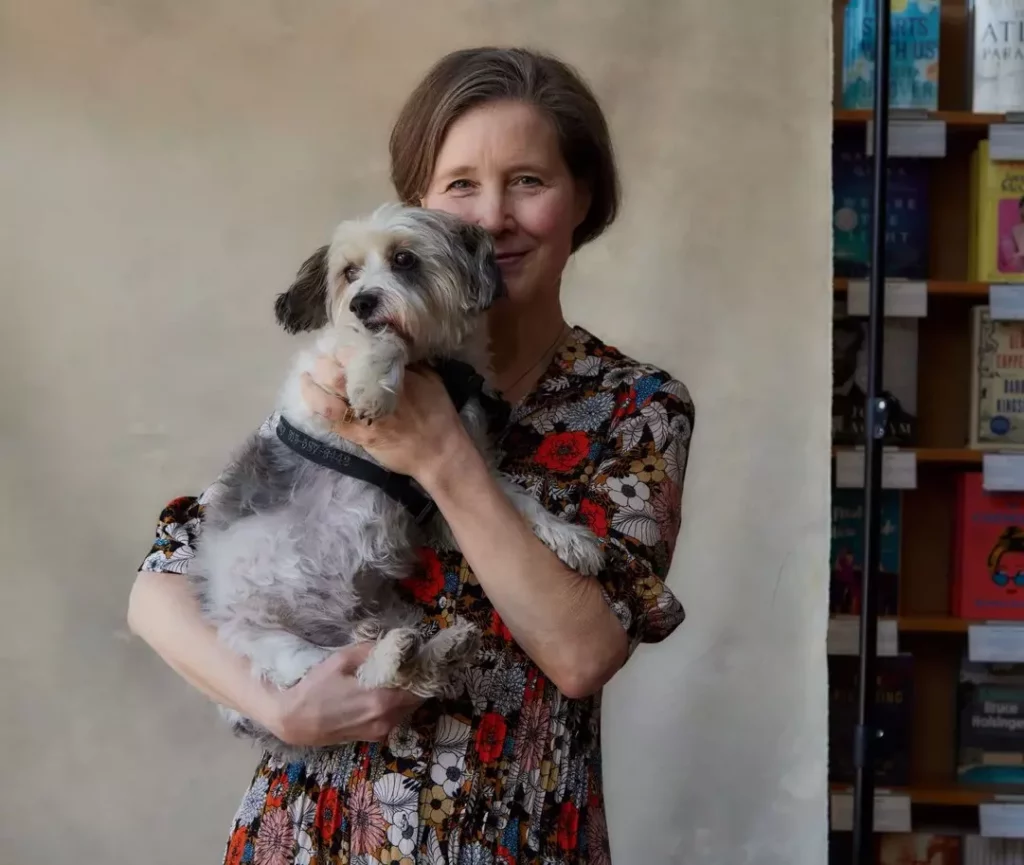
Ann Patchett is a renowned author known for her nine novels, including Bel Canto and State of Wonder.
She has also written nonfiction books and children’s stories. Patchett has received numerous awards, such as the National Humanities Medal and the PEN/Faulkner Award. In 2011, she co-founded Parnassus Books in Nashville, Tennessee, becoming a strong advocate for independent booksellers. Her dedication hasn’t gone unnoticed; she was named one of Time magazine’s 100 Most Influential People in the World in 2012.
Ann Patchett lives in Nashville with her husband, Karl VanDevender, and their dog, Sparky, and she shares her book recommendations and insights on her blog, Notes from Ann.
For updates on her bookstore and literary endeavors, you can follow Parnassus Books on various social media platforms.
Book Club Questions for The Dutch House
Disclaimer: the following discussion questions contain spoilers, so proceed with caution if you haven’t finished the book yet.
- What are your thoughts on the characters of Danny and Maeve? How did their relationship shape the story?
- Explore the dynamics between the siblings, stepmother Andrea, and their biological mother. How did these relationships evolve over the course of the story?
- What kind of person is Cyril Conroy? How have his specific actions, routines, and decisions influenced Maeve and Danny? Why was he “always more comfortable with his tenants than he was with the people in his office or…in his house”? What was it about buildings that he cherished so deeply?
- Explore the various roles Fluffy assumes within the Dutch House as they evolve. How does she impact Maeve and Danny overall?
- What led to Elna Conroy abandoning her children? In what ways could such a profound decision be justified or condemned? Why, as Maeve argues, are men who leave their families often judged less severely?
- How does the theme of family play out in the novel? In what ways do the characters’ family backgrounds influence their actions and choices?
- The Dutch House itself is a central theme. How does the house symbolize different things for different characters? What does it represent to Danny and Maeve?
- The story is narrated by Danny. How does his perspective shape the reader’s understanding of the events and characters?
- Later in life, while sitting outside the Dutch House, Danny realizes that “the feeling of home” he was experiencing was due not to the house but “wholly and gratefully” to his sister Maeve. What defines and determines a feeling of home? What role does a house play, if any?
- Why do Maeve and Danny react so differently to their mother’s return?
- What might it signify that when faced with an aged and enraged Andrea, Danny thinks he “had not been born with an imagination large enough to encompass this moment”? What role does imagination play in times of trauma or emotional difficulty? How is it related to compassion and empathy? When does imagination become unhealthy illusion?
- After reuniting, Elna tells Maeve and Danny that when she left, she “knew [they] were going to be fine.” In what ways did they end up fine or not?
- The narrative spans several decades. How did the passage of time affect the characters and their relationships? Discuss specific instances where time played a significant role.
- How did the parenting styles of Cyril, Elna, and Andrea impact the lives of Danny and Maeve? Are there any parallels between the relationships of the parents and their children?
- What were the “original disappointments” that Celeste felt about Danny? Why did her relationship with Maeve start off well but turn acrimonious?
- Despite completing medical school, why is Danny strongly drawn to construction, buying, and selling of buildings? What does he mean when he says he is “at home on a building site”?
- What does it mean that Maeve and Danny “had made a fetish out of [their] misfortune, fallen in love with it”? What explains such a deep attachment to painful experiences and relationships? Why might Danny resist being “dislodged from [his] suffering”?
- Danny eventually realizes that “after years of living in response to the past, [he and Maeve] had somehow become miraculously unstuck.” What does this mean? How did it happen? What accounts for the “insatiable appetite for the past” shared by Maeve and Fluffy? How does one discern when connections to the past are healthy or restrictive?
- Finally, Danny realizes that “the rage [he] carried for [his] mother exhaled and died. There was no place for it anymore.” What does this mean? What are other ways to process such anger and emotional pain?
- Discuss the idea of parental expectations and how it influenced the characters’ decisions, especially in terms of education, career, and relationships.
- Reflect on the choices made by the characters and the consequences they faced. How did these choices define their lives? Can you identify turning points for specific characters?
- Describe the relationship between Maeve and Danny. What accounts for the endurance and intensity of their mutual support and love?
- What were the consequences of Elna Conroy leaving her husband and children? Was it preferable, as Maeve argues, to have spent some years with her and then lost her, or, as Danny experienced, to never have known her? What are the unique emotional challenges associated with each experience?
- What might be the significance of Maeve receiving a box of matches and instructions on how to light a fire from her mother on her eighth birthday?
- When discussing Maeve’s diabetes, Danny suggests that, “the body had all sorts of means to deal with what it couldn’t understand.” What does this mean? What is the connection between physical health and emotional stress or traumas?
- Are there moments in the story where forgiveness played a significant role? How did forgiveness (or lack thereof) affect the characters’ development?
- Explore the symbolism of the Dutch House itself. What does it represent in terms of wealth, status, and emotional connection?
- Consider the significance of the butterscotch Lifesavers in the story. How does this small detail carry meaning throughout the novel?
- How did Ann Patchett’s writing style contribute to your engagement with the story? Were there specific passages or descriptions that stood out to you?
- What are the intricate details of the Dutch House—its rooms, stairways, architectural specifics, furniture, windows, and doors? What emotions or characteristics are associated with each space or element? What is the overall impact of the house, and what might Danny imply when he says, “the house was the story” or that it was “impossible”?
- In what ways are Sandy and Jocelyn significant to the various Conroys?
- What are Maeve’s distinctive strengths and abilities? What are her priorities in life? What might explain her choice to remain in her undemanding job or not pursue a committed romantic relationship or family of her own?
- What societal, cultural, and familial influences might excuse Cyril and Danny from taking responsibility for the lives and challenges faced by the girls and women in the house?
- What is the source of Andrea’s power? Why is she so determined to wield it against others, especially the women in the house? What does she desire and value?
- Analyze the significance of each portrait in the Dutch House.
- Why do Maeve and Danny clandestinely sit in a car outside the Dutch House multiple times over the years after their exile from it?
- What transformations are hinted at by May’s acquisition of the Dutch House? What might it signify that Danny accompanies her through the darkness to enter it?
- Reflect on the use of humor and irony in the novel. How did these elements enhance the storytelling?
- What are your overall thoughts on the book? Did it meet your expectations? Why or why not?
- Do you agree with the critical acclaim and awards received by “The Dutch House”? Why do you think this novel resonated with so many readers?
Other Books by Ann Patchett
Hope you enjoyed the book club discussion questions and reading guide for The Dutch House by Ann Patchett!
Here are some more of my book club recommendations related to this book:
Tom Lake by Ann Patchett
In this beautiful and moving novel about family, love, and growing up, Ann Patchett once again proves herself one of America’s finest writers.
In the spring of 2020, Lara’s three daughters return to the family’s orchard in Northern Michigan. While picking cherries, they beg their mother to tell them the story of Peter Duke, a famous actor with whom she shared both a stage and a romance years before at a theater company called Tom Lake.
As Lara recalls the past, her daughters examine their own lives and relationship with their mother, and are forced to reconsider the world and everything they thought they knew.
Tom Lake is a meditation on youthful love, married love, and the lives parents have led before their children were born. Both hopeful and elegiac, it explores what it means to be happy even when the world is falling apart.
As in all of her novels, Ann Patchett combines compelling narrative artistry with piercing insights into family dynamics. The result is a rich and luminous story, told with profound intelligence and emotional subtlety, that demonstrates once again why she is one of the most revered and acclaimed literary talents working today.
To read my review of this book, click here.
For my book club questions and printable reading guide for this book, click here.
These Precious Days by Ann Patchett
These Precious Days is a collection of heartfelt essays written by Ann Patchett, in which she reflects on various aspects of life, including home, family, friendships, and the art of writing.
The central essay explores an unexpected friendship with Tom Hanks’ assistant, Sooki, delving into the profound impact of human connections. Patchett’s writing is eloquent and intimate, inviting readers to explore the depths of her experiences and emotions.
She weaves together personal stories with universal themes, touching on childhood memories, literary influences, and the fleeting nature of life.
Through her words, Patchett reminds readers to cherish the precious moments in life and appreciate the beauty found in everyday experiences.
To read my book club questions for this book, click here!
Commonwealth by Ann Patchett
The acclaimed, bestselling author—winner of the PEN/Faulkner Award and the Orange Prize—tells the enthralling story of how an unexpected romantic encounter irrevocably changes two families’ lives.
One Sunday afternoon in Southern California, Bert Cousins shows up at Franny Keating’s christening party uninvited. Before evening falls, he has kissed Franny’s mother, Beverly—thus setting in motion the dissolution of their marriages and the joining of two families.
Spanning five decades, Commonwealth explores how this chance encounter reverberates through the lives of the four parents and six children involved. Spending summers together in Virginia, the Keating and Cousins children forge a lasting bond that is based on a shared disillusionment with their parents and the strange and genuine affection that grows up between them.
When, in her twenties, Franny begins an affair with the legendary author Leon Posen and tells him about her family, the story of her siblings is no longer hers to control. Their childhood becomes the basis for his wildly successful book, ultimately forcing them to come to terms with their losses, their guilt, and the deeply loyal connection they feel for one another.
Told with equal measures of humor and heartbreak, Commonwealth is a meditation on inspiration, interpretation, and the ownership of stories. It is a brilliant and tender tale of the far-reaching ties of love and responsibility that bind us together.
Printable PDF
Feel free to distribute these questions to your book club members before your meeting. Simply click the link below to download and print the PDF file.
Happy reading! ❤️
